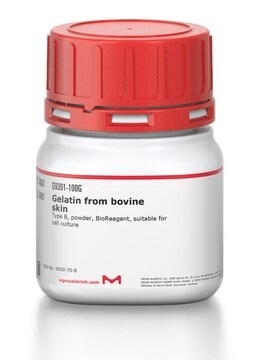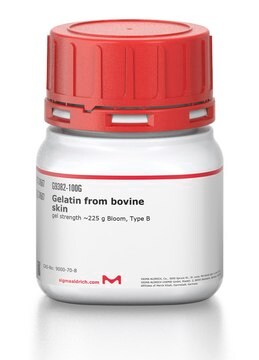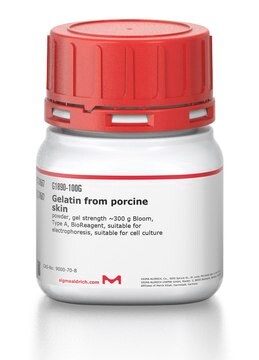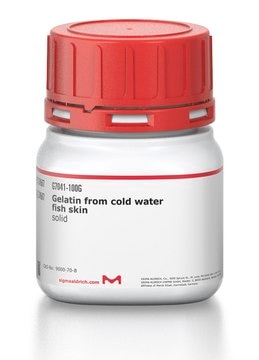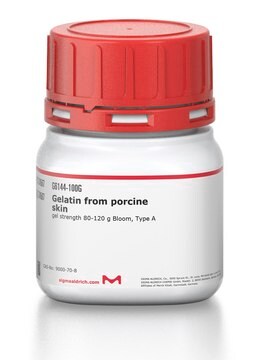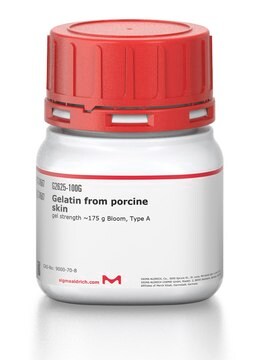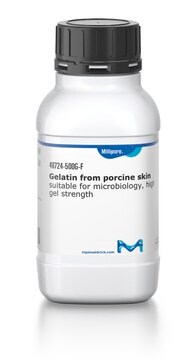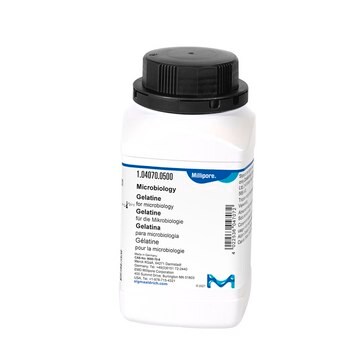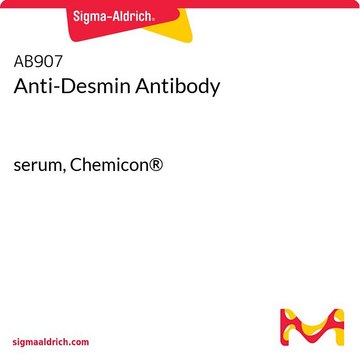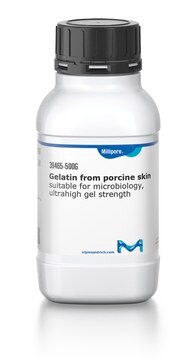Wichtige Dokumente
G6650
Gelatine aus Rinderhaut
Type B
About This Item
Empfohlene Produkte
Biologische Quelle
bovine skin
Qualitätsniveau
Typ
Type B
Form
powder
Methode(n)
ELISA: suitable
cell culture | mammalian: suitable
immunocytochemistry: suitable
western blot: suitable
Suchen Sie nach ähnlichen Produkten? Aufrufen Leitfaden zum Produktvergleich
Anwendung
Gelatin was used for coating cell culture to improve attachment of cells, in addition to PCR to help stabilize Taq DNA. It was used as a blocking reagent in Western blotting, ELISA, and immunohistochemistry. Gelatin can also be used as a component of media for species differentiation in bacteriology. Gelatin is a biocompatible polymer and has been used as delivery vehicle for the release of bioactive compounds and in the generation of scaffolds for engineering applications.
It was used to test keratinocyte growth factor stimulation of gelatinase (matrix metalloproteinase-9) and plasminogen activator in histiotypic epithelial cell culture. It was also used to study the changes in the nucleolar organizer regions in the tuberomammillar region after dehydration.
Komponenten
Vorsicht
Angaben zur Herstellung
Lagerklassenschlüssel
11 - Combustible Solids
WGK
nwg
Flammpunkt (°F)
Not applicable
Flammpunkt (°C)
Not applicable
Persönliche Schutzausrüstung
Eyeshields, Gloves, type N95 (US)
Hier finden Sie alle aktuellen Versionen:
Analysenzertifikate (COA)
Die passende Version wird nicht angezeigt?
Wenn Sie eine bestimmte Version benötigen, können Sie anhand der Lot- oder Chargennummer nach einem spezifischen Zertifikat suchen.
Besitzen Sie dieses Produkt bereits?
In der Dokumentenbibliothek finden Sie die Dokumentation zu den Produkten, die Sie kürzlich erworben haben.
Kunden haben sich ebenfalls angesehen
Unser Team von Wissenschaftlern verfügt über Erfahrung in allen Forschungsbereichen einschließlich Life Science, Materialwissenschaften, chemischer Synthese, Chromatographie, Analytik und vielen mehr..
Setzen Sie sich mit dem technischen Dienst in Verbindung.